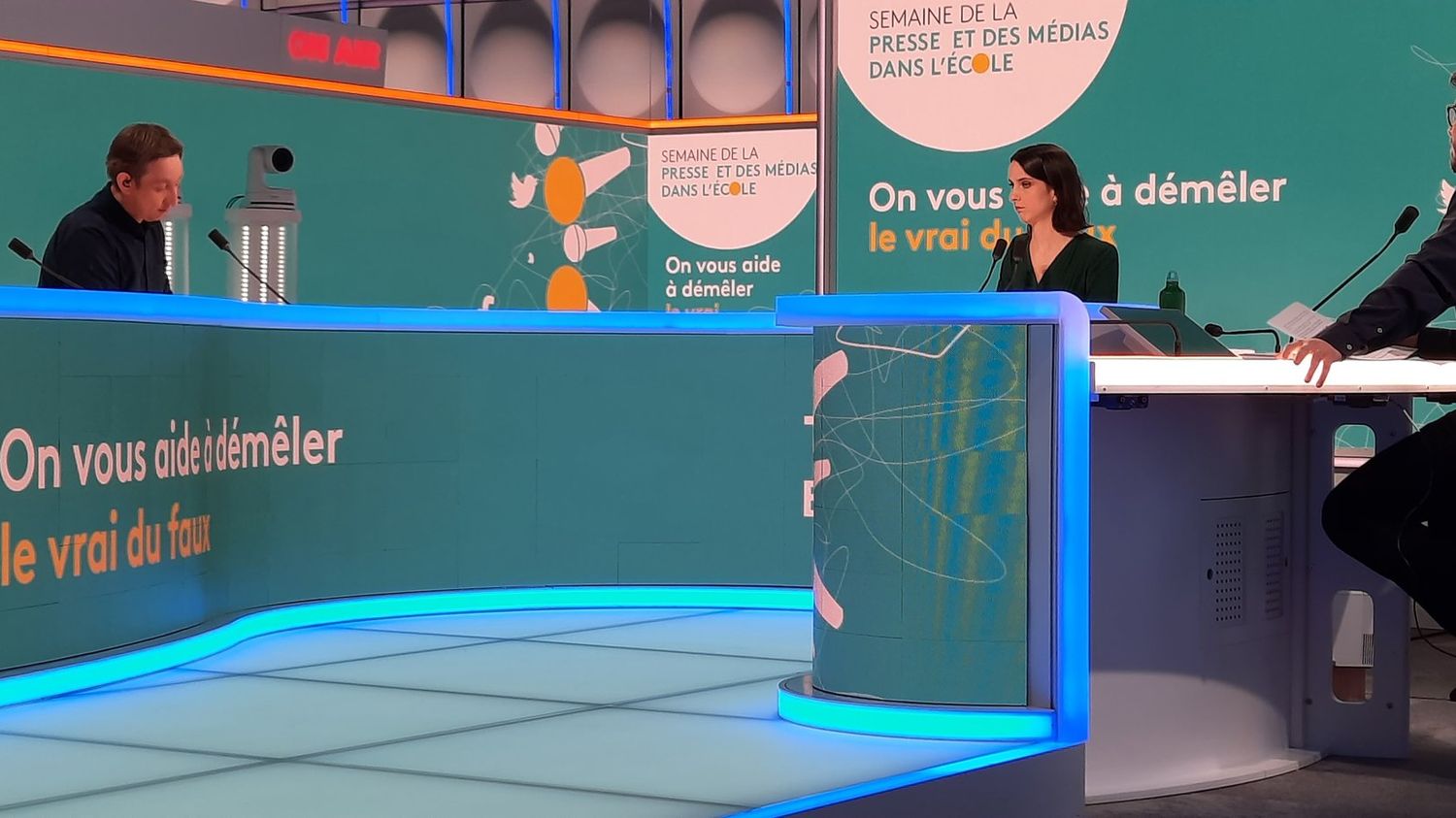This week in the “Vrai du Faux Junior”, we answer students’ questions about our job as a journalist and our working techniques at the franceinfo true and false unit, on the occasion of press and media week. in the school – SPME.
On the occasion of the 34th edition of the SPME, the week of the press and the media in the school, the Cellule du True of False de franceinfo this week offered a live interactive workshop in front of more than 13,000 students during a one-hour broadcast. The students of the André Derain college, in Chambourcy, in the Yvelines, took the opportunity to ask us questions about our work, our verification techniques and the tools we use on a daily basis to disentangle the true from the false. This is Emilie Gautreau, head of the service True of False from franceinfo who answers them.
>> Watch the special Le Vrai du Faux workshop on the occasion of the week of press and media in the school – SPME 2023
Find a topic and then check it out
Gabin asks us what are “the different stages of our work in the cell” and Gaëtan asks us about our “methods for verifying information“. Emilie Gautreau explains to them that “the historical rendezvous of the cell is the Vrai du Faux, which has existed for eleven years. This is a column that is broadcast every morning and was originally created to verify political speech, to detect in what women and men politicians say approximations, false information, or even data taken out of context“.
Over time, this verification mission has gradually extended to everything that circulates on social networks, where we spot “posts, tweets, with statements that seem to us to be erroneous, approximate, but also false images, truncated videos that can circulate, excerpts from videos broadcast on the networks sometimes taken out of context…“
To carry out this work, Emilie Gautreau explains that there is a whole daily monitoring work, “listening to political guests in all the media every morning.“To verify the information, “we will seek to obtain information by calling experts on the subject, by reading everything that exists on the subject, or, when it comes to false images, verifications using different tools such as reverse image search .“To perform reverse image search, you must first download the photo you want to check, then drag it to Google Images or Tineye and this allows us in particular to know, where and when, this image was broadcast for the first time.
Some information is harder to verify than others
Alexis asks us if “some information is harder to verify than others.” “Yes, clearly!“, replies Émilie Gautreau. “There is information more difficult to verify than others for many reasons, it can be because there is no data or data recent enough to verify information“, she explains.
For example, the Cellule du Vrai du Faux recently worked on the sectors which, in France, consume the most water, and there were not sufficiently recent figures to speak about it in a complete and precise manner. The journalists of the service therefore waited for the latest figures published this week to talk about it on the franceinfo antenna.
Emilie Gautreau explains that the information is harder to verify also on “those subjects where we can’t reach the right contact who could answer our questions. There is also everything that is happening abroad, especially when it is in a war zone like in Ukraine at the moment, because there are certain areas where it is difficult to send journalists to go and check the situation. ‘information” Finally, Émilie explained to Alexis that our work can be complicated in the face of this information which evolves very quickly as was the case with the Covid, especially at the beginning when information on the virus changed often. “In these cases, our role is to explain what we know, what we do not know, and above all why, at the moment T, we cannot yet answer such and such a question.“, she specifies.
